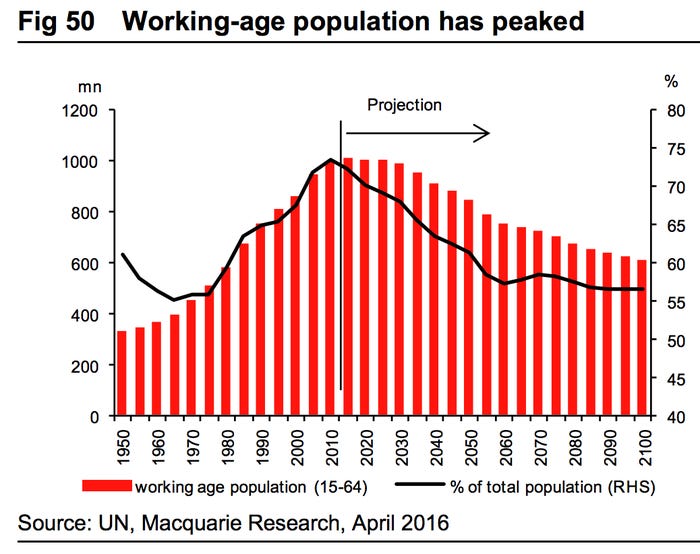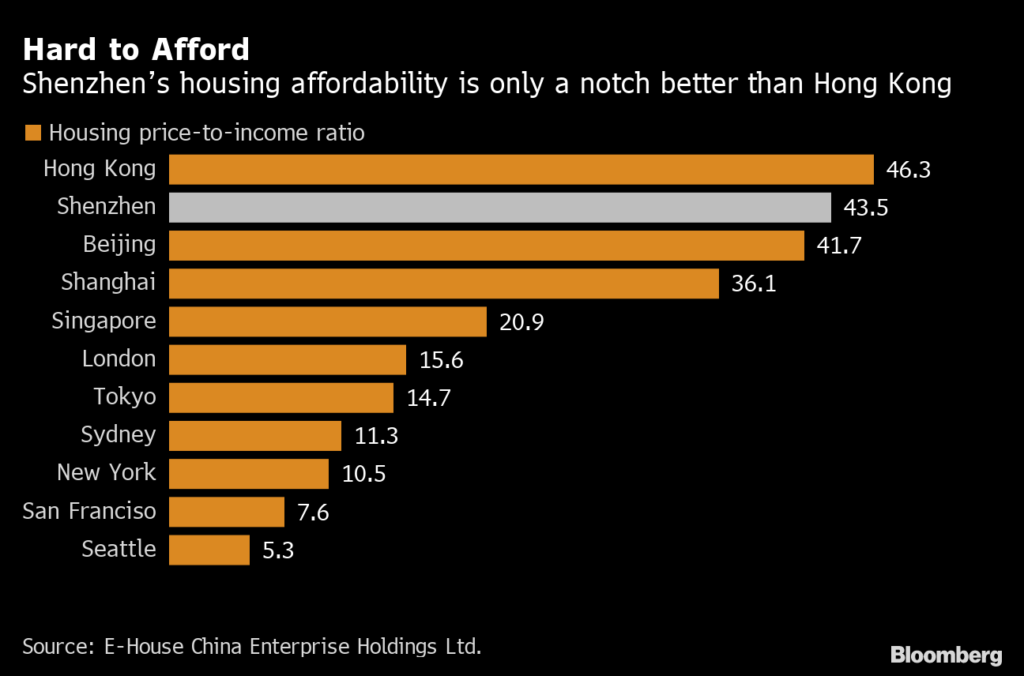I made a comment to a friend of mine that to me it was a forgone conclusion that the Chinese economy will collapse. The question for me is how long will the process take and how bad will the aftermath be. He asked for some links so I just put together this short piece to emphasize some of the most intractable issues facing China, regardless of who is in power moving forward and what steps they take to mitigate the issues.
From a 2010 article in the China Daily, an English-language daily newspaper owned by the Publicity Department of the Chinese Communist Party.:
China annually sees more construction than any other country. In recent years, the nation has had up to 2 billion square meters of development annually. Each year, China uses 40 percent of the world’s cement and steel, the main ingredients of the construction industry.
Around 40 percent of building land is created every year by the demolition of older developments.
But both experts and industry watchers have questioned the rapid speed of demolition and reconstruction, suggesting poor building practices and a lack of consistent urban planning, along with a blind pursuit of economic gain on the part of developers, are the real reasons for the relatively short lifespan of buildings.
In April, Qiu Baoxing, vice-minister of the ministry, said during an industry forum that Chinese buildings can only stand for between 25 and 30 years. In contrast, the average life expectancy of a building in Britain is 132 years and they last around 74 years in the United States.
‘Most homes’ to be demolished in 20 years (chinadaily.com.cn)
From a 2013 article for the China Economic Review:
[Robert Blohm, an economist and managing director of consultancy Keen Resources Asia] sees two engines adding up to China’s current supergrowth: Massive rural to urban migration and an already gigantic and growing population. But Chinese migration to cities will likely run out of steam by next decade. The country is also already on the verge of slipping into negative population growth, so that engine will also run out. Such trends have similarly brought supergrowth to an end in the Asian tiger economies like South Korea, Blohm said.
“So what happens by that time?” he said. “Well, that’s when a lot of the construction has reached its 30 year limit and it all has to be rebuilt. And you’ve got a nothing economy there to support this entire reproduction of what the economic boom produced. I don’t see that happening.”
How will a slowing China cope with rapidly aging buildings? | China Economic Review

This graph shows how China’s rise from the late 1970’s to the present correlated closely with the increase from a little over one worker for every non-worker to almost 3 workers for every non-worker. The graph also shows that the number of workers in China has already topped out and is declining and the percentage of the population that is working age is steadily falling and will continue to do so. In the next 40 years China will go from around 3 workers for every non-worker to back to a little over one worker for every non-worker. The boom years in China are numbered.

This graph shows the relative price of housing in some of the world’s major cities. The ratio is the price of a typical house divided by the average income. In other words, if someone paid no other expenses and put all their income toward paying off their home, how many years would it take? New York City, which is to most Americans living elsewhere shockingly expensive, is still one quarter the price of Beijing. And remember that the China Daily estimated Chinese buildings last 25 to 30 years versus 74 years for American building. So in China, homeowners will be paying for their homes years after the home is no longer standing, and that’s if the homeowner has no other expenses. Imagine you’re a citizen of China. You work extremely hard so that you can buy a house. The house costs you roughly 40 times your annual income so you pool resources with family and friends. Due to the poor quality of construction, though, the house’s useful life is only 25-30 years. This is simply unsustainable.
Contemplate these facts. A working population that is declining both in absolute terms and as a percentage of the population and housing that is both outrageously expensive and also extremely poorly constructed. All these trends portend a collapse more than an economic juggernaut, and the clock is ticking.